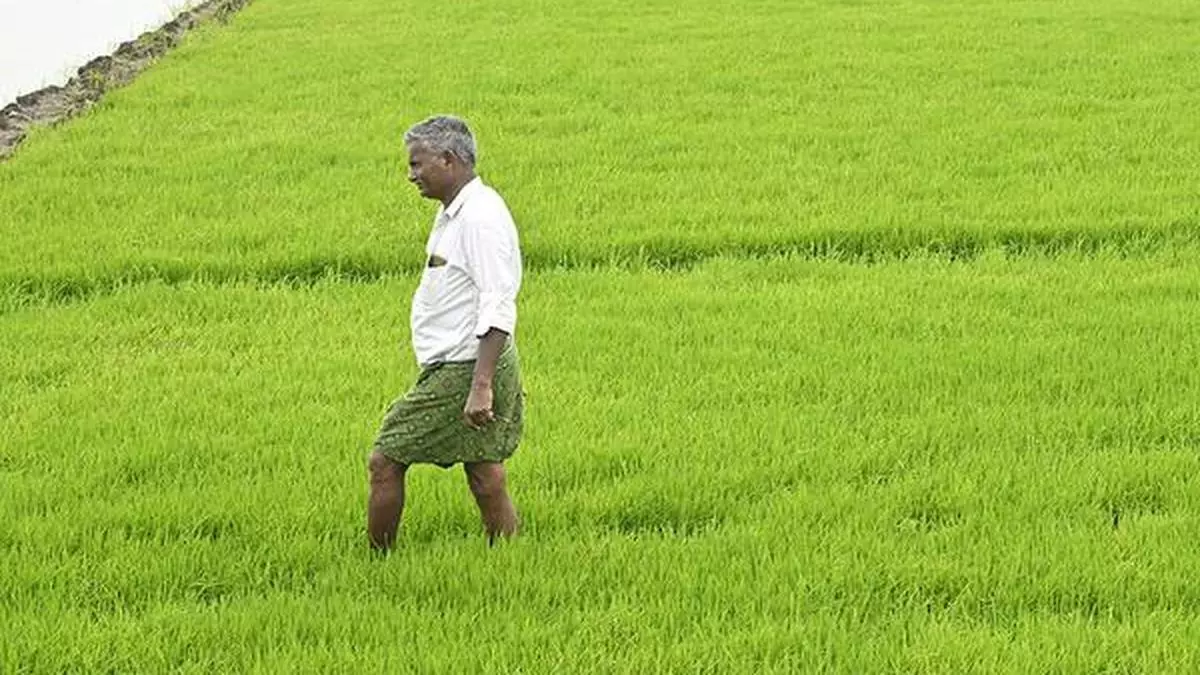Expectations from the agriculture sector in Union Budget 2024-25
The Union Budget 2024-25 is on the horizon, and with it comes a wave of anticipation for allocations and reforms from India’s agrarian community. There are numerous existing schemes, but their efficiency needs to improve. India’s agriculture sector growth was pegged at a 7-year low of 1.8 per cent in FY24, which lags significantly behind India’s overall economic growth rate of 8.2 per cent. That being said, the other sectors of the economy are growing at tremendous speed. Some reforms are overdue and need to be accepted by the agrarian communities.
Crop diversification
Today, there is an over-dependence on certain limited produce during farming. Diversifying crops based on demand gaps will lead to doubling farm income. India has supply deficits in dals, especially moong. The Agriculture Minister has announced that the government will buy up all the Moong Dal at MSP. Alongside agricultural produce, it is essential to enhance collateral activities through product blending on the farm, to keep investments minimal, while also boosting income. Schemes such as the ike Pradhan Mantri Matsya Sampada Yojana (PMMSY) support activities such as deficit diversification, dairy farming, and fish farming. Additional budget allocations are needed to bolster these complementary farm-level activities.
Contributory small pension scheme for farmers
One of the key announcements expected is the expansion of the Pradhan Mantri Kisan Man Dhan Yojana (PM-KMY) for farmers owning less than two acres of land, currently providing a ₹3,000 monthly pension. This could also be achieved by extending the benefits of the Atal Pension Yojana (maximum of ₹5,000 per month) to include subsistence farmers with less than two acres. Many of the 6.6 crore subscribers could be farmers, who already benefit from these schemes. The maximum pension could be combined and increased to ₹10,000 efficiently.
Another initiative, the Pradhan Mantri Kisan Samman Nidhi (PM-KISAN), aims to create a safety net, offering up to ₹6,000 annually. Thus, by age 60, a marginal farmer could potentially earn ₹1.14 lakh annually for subsistence farmers, assuming there is no exclusion under Atal Pension Yojana beneficiaries.
The key is effective enrolment and education of beneficiaries. Farmers should provide evidence of farming activities to ensure benefits reach those genuinely engaged in agriculture, similar to the Production Linked Incentive (PLI) scheme’s approach focusing on performance and active participation.
Minimum support price (MSP) reforms-PM AASHA
There is a strong push to make MSP a reference price similar to minimum wages, ensuring it acts as a baseline for agricultural produce sales. This would provide farmers a guaranteed minimum income, reducing the risk of market fluctuations. The expectation is that the government will introduce dynamic MSP, reflecting the rising input costs. It is also necessary to educate farmers and promote storage in regulated warehouses to combat price fluctuations
Enhancing crop insurance
The Pradhan Mantri Fasal Bima Yojana (PMFBY) (allocation of ₹14,600 crore in FY24-25 BE) is crucial to protecting crop loss due to adverse weather conditions and other risks. There are issues around declaring drought in affected farm areas, especially where there is no widespread destruction of crops. Thus, this coverage needs expansion and additional budgetary allocation may become necessary.
Fertiliser procurement and Nano fertilisers
The fertiliser subsidies are 0.50 per cent of GDP. Farmers need to move towards using Nano fertilisers to increase efficiencies in the crop management process. Promoting the use of Nano fertilisers while maintaining traditional fertiliser imports ($10 billion) and domestic production will need additional budget allocation.
Financial support and loan target-MISS Scheme
Demand for agricultural loans is also expected to rise by up to 25 per cent of the Agricultural GDP. Today, more farmers have availed of pre-harvest and post-harvest loans. This includes Kisan Credit Cards. Agri credit needs to be enhanced for farm productivity capex and seed opex. Interest subvention and loan repayment guarantees (currently ₹22,600 crore) will need to be increased to achieve this objective.
Expanding agricultural exports
Due to inflation risks, there is always an impending fear of export bans or duties. While it is important to manage inflation, a non-budgetary method could give a cooling period, before which the ban/ export duty comes into effect. Agri exports today are in the region of $55 billion. One way to keep exports going is to improve value and marketing such that agricultural products of higher variety are allowed to be exported. It may be prudent to allocate budget funds toward the production of high-quality value-added products, ensuring it is exempt from export bans or cuts.
In conclusion, we need to enhance,maintain, measure and target budgetary allocation for precise delivery to achieve optimum results.
The author is Member of the Expert Committee in the Ministry of Agriculture & Farmers Welfare, Government of India, and Founder and Managing Director of Basiz Fund Service Private Ltd
